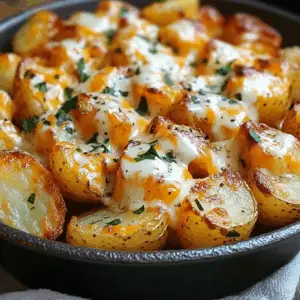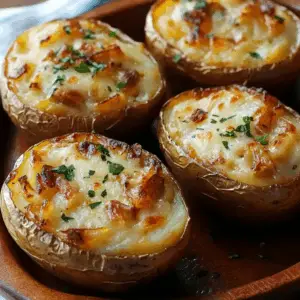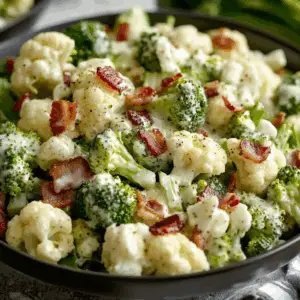There’s nothing quite like the comforting, savory goodness of French onion potatoes. This dish perfectly blends the rich, caramelized flavor of yellow onions with the creamy, hearty texture of russet potatoes, creating a meal that feels both familiar and indulgent. Ideal for family dinners, potlucks, or holiday gatherings, this recipe transforms simple pantry staples into a satisfying main or side dish.
The magic lies in the process of caramelization, where onions are slowly cooked to develop deep, sweet flavors. When layered onto fluffy baked potatoes and topped with melted Gruyère cheese, the result is unforgettable. According to the Wikipedia entry on caramelization, this cooking method enhances the natural sugars in onions, making them the star of the dish.
Additionally, the choice of russet potatoes is crucial, as their starchy interior perfectly absorbs the flavors of the broth and butter, producing a tender, flavorful base that complements the rich onion topping beautifully.
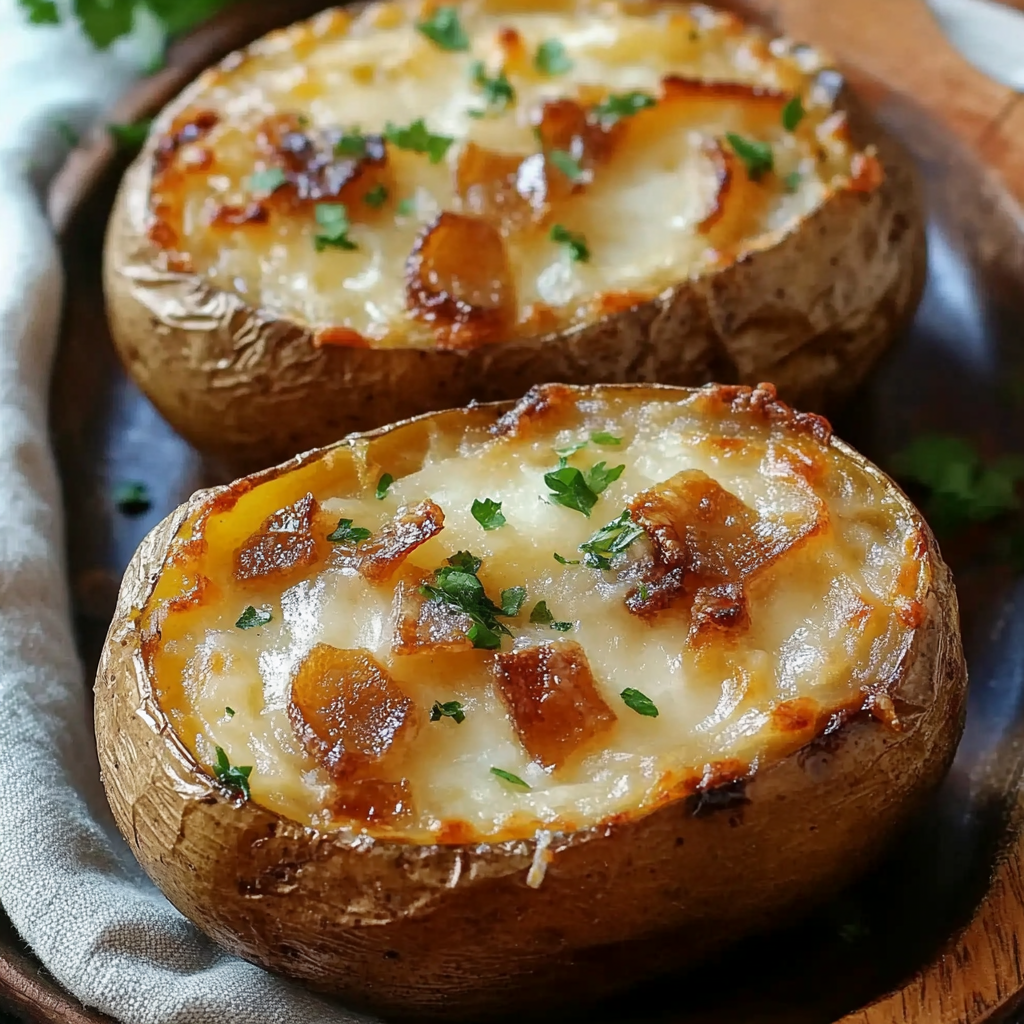
Key Ingredients and Their Importance
Choosing the right ingredients is essential to make French onion potatoes truly outstanding. Each component plays a specific role, enhancing flavor, texture, and overall appeal.
-
Russet Potatoes: Known for their starchy, fluffy texture, russet potatoes are ideal for baking. Their ability to absorb the savory broth ensures each bite is packed with flavor.
-
Yellow Onions: The star of the dish, yellow onions develop a sweet, rich flavor after slow caramelization.
-
Gruyère Cheese: A must for that perfectly gooey, melty topping. Gruyère offers a nutty taste that complements the sweet onions beautifully.
-
Olive Oil and Butter: These fats ensure the onions cook evenly and add richness.
-
Thyme, Salt, and Pepper: Essential seasonings that deepen the savory notes.
Incorporating a small amount of beef broth ties all the ingredients together. The broth not only deglazes the pan but also intensifies the umami flavor, according to culinary standards discussed in broth preparation. If you’re looking for a lighter, vegetarian option, vegetable broth makes an excellent substitute, offering a gentler background flavor while preserving the dish’s comforting essence.
Each ingredient in French onion baked potatoes plays an irreplaceable role, ensuring a balanced, savory result.
Step-by-Step Easy French Onion Potatoes Recipe
Creating French onion potatoes at home is surprisingly simple and incredibly rewarding. Here’s how you can achieve that irresistible savory flavor with ease.
Preparing the Potatoes
Start by selecting four large russet potatoes, which are ideal due to their fluffy texture when baked. Preheat your oven to 400°F (200°C), and scrub the potatoes thoroughly under cold water. After drying them, pierce each potato several times with a fork to allow steam to escape during baking.
Rub each potato with olive oil to achieve a crisp skin, then place them directly on the oven rack. Bake for 45–60 minutes or until they are tender when pierced with a knife. While baking, it’s a good time to prepare the caramelized onions.
According to best practices in oven baking, ensuring air circulation around the potatoes will help achieve a consistent cook and better texture. It’s also recommended to avoid wrapping them in foil, which can cause steaming instead of baking.
Caramelizing the Onions
Meanwhile, melt two tablespoons of butter in a large skillet over medium heat. Add two thinly sliced yellow onions to the pan. Stir occasionally, allowing them to cook slowly for about 15 minutes.
For perfectly caramelized onions, patience is key. As described in the process of caramelization, slow cooking allows the natural sugars to develop, creating that deep, sweet flavor essential for authentic French onion taste.
Step-by-Step Easy French Onion Potatoes Recipe
Enhancing the Flavor
Once the onions have softened, sprinkle in:
-
1 teaspoon of sugar
-
1 teaspoon of salt
-
1/2 teaspoon of black pepper
-
1/2 teaspoon of thyme
Continue cooking for another 10–15 minutes, stirring occasionally. The onions should become deeply golden and fragrant. Then, pour in 1/2 cup of beef broth and stir well, scraping up any browned bits stuck to the skillet. Reduce the liquid slightly until it forms a glossy coating on the onions. This broth technique enhances the savory potato bake recipes by deepening the flavor base.
If you’re looking for vegetarian alternatives, you can use vegetable broth without sacrificing the richness of the dish, as commonly suggested in vegetarian broth recipes.
Assembling the Potatoes
When the baked potatoes are ready, remove them from the oven and let them cool slightly. Carefully slice down the center of each potato and gently squeeze the sides to open them up. Fluff the insides with a fork for a light, airy texture.
Fill each potato generously with the caramelized onion mixture. Top them with a hearty sprinkle of Gruyère cheese, ensuring each potato is well covered. Return the stuffed potatoes to the oven for an additional 5–7 minutes until the cheese is melted and bubbly. Finally, garnish with chopped parsley for a fresh finish.
Variations on the Classic Recipe
While traditional French onion potatoes are incredibly delicious, experimenting with variations can keep the dish exciting and versatile for different occasions. Here are a few creative spins on the classic:
-
Swap the Cheese: If Gruyère cheese isn’t available, Swiss cheese or sharp cheddar cheese can substitute beautifully. Each cheese offers a unique flavor profile, from nutty to bold.
-
Vegetarian Version: Replace beef broth with vegetable broth. This change keeps the dish rich and savory while accommodating different dietary preferences.
-
Loaded Style: For a heartier meal, mix in crispy bacon bits or sautéed mushrooms along with the caramelized onions.
-
Mini Potato Bakes: Use smaller baby potatoes for appetizer-sized portions that are perfect for parties or gatherings.
Adding a few simple ingredients can completely transform the flavor experience. For instance, incorporating a sprinkle of fresh thyme or even a drizzle of truffle oil can elevate the dish to gourmet levels. According to thyme herb experts, this aromatic herb enhances the earthiness of potato dishes exceptionally well, making it a perfect pairing for your next savory bake.
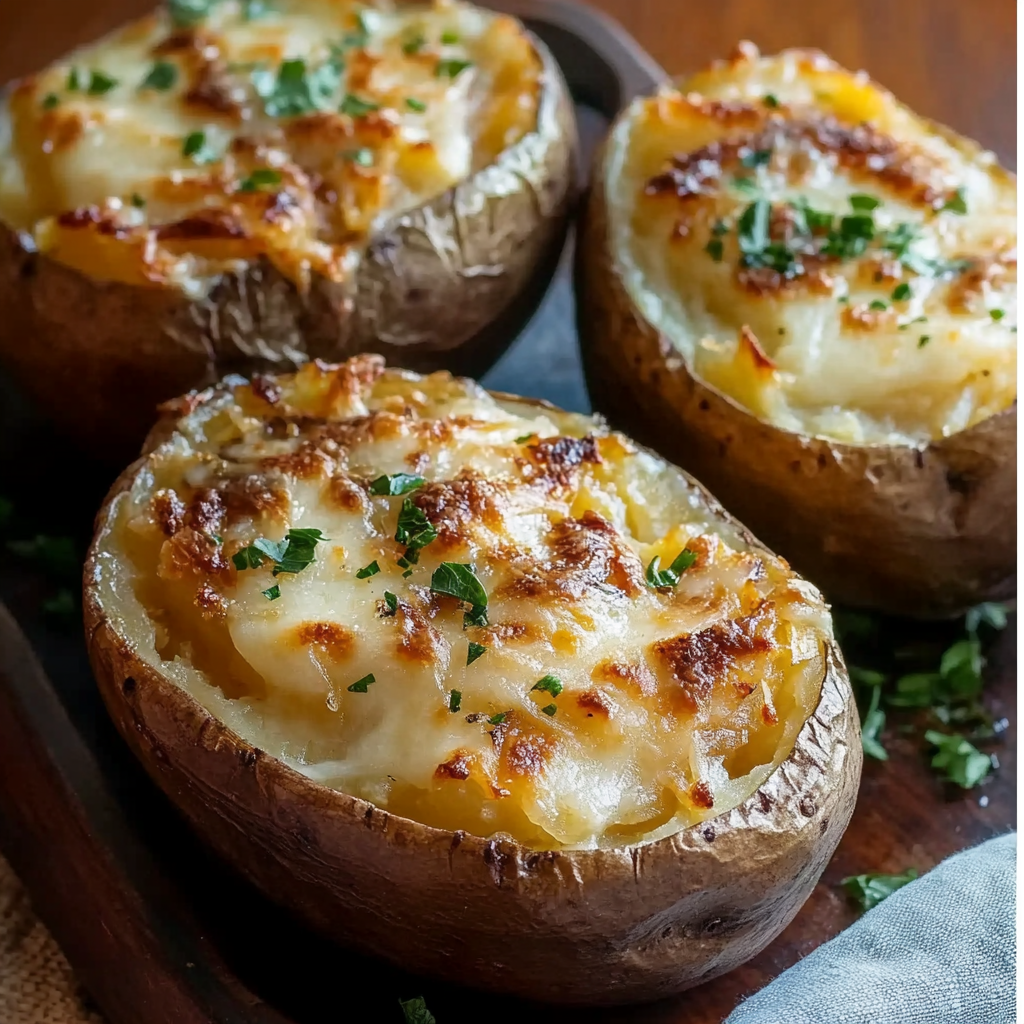
Other Savory Potato Bake Recipe Ideas
If you’re looking to expand your love for savory potato bake recipes, there are many mouthwatering options to explore beyond the classic French onion potatoes. These dishes bring creativity and comfort to your table, whether you’re cooking for a crowd or enjoying a cozy dinner at home.
Cheesy Scalloped Potatoes
One of the most beloved potato dishes, cheesy scalloped potatoes, layers thin slices of potatoes with a creamy, cheesy sauce. Typically made with heavy cream, butter, and sharp cheeses like cheddar or Gruyère cheese, this dish becomes wonderfully rich and indulgent. For an inspiring take, check out this cheesy scalloped potatoes idea that pairs perfectly with roasted meats or grilled vegetables.
Potato and Leek Gratin
Potato and leek gratin is a refined variation that highlights the mild, sweet flavor of leeks. By sautéing leeks until tender and layering them between slices of russet potatoes, you create a bake that feels both luxurious and hearty. A light topping of breadcrumbs or Parmesan cheese gives it an irresistible golden crust.
This dish is especially great for formal gatherings or festive meals. Plus, as baking techniques suggest, the slow bake enhances the layers’ flavors, making each bite richer.
Sweet Potato and Caramelized Onion Bake
If you want a slight twist, using sweet potatoes instead of regular potatoes can bring a subtly sweet element to your savory potato bake recipes. Combine thinly sliced sweet potatoes with deeply caramelized onions to create a balance of sweet and savory. A drizzle of balsamic glaze at the end can elevate the flavors even more, as shown in this sweet potato and caramelized onion bake.
Broccoli and Potato Casserole
For a healthier option packed with nutrients, a broccoli and potato casserole is ideal. Combining steamed broccoli florets with creamy mashed potatoes creates a dish that’s both comforting and nutritious. The addition of cheese makes it even more irresistible, and using a touch of thyme herb can add a fresh aroma that ties all the flavors together.
Explore different variations like the broccoli and potato casserole to enjoy a more vegetable-forward, yet still hearty, bake.
Loaded Mashed Potato Bake
Transform leftover mashed potatoes into a winning meal by adding shredded cheese, sour cream, bacon, and scallions. A baked casserole version of loaded mashed potatoes gives a delightful crisp on top while staying creamy inside — a clever and delicious way to reduce food waste
Tips for the Perfect Potato Bake
Creating the best savory potato bake recipes requires attention to technique and ingredients. Here are essential tips to guarantee success every time:
-
Choosing the Right Potatoes: Use russet potatoes for a fluffier, drier texture, or Yukon Gold for a creamier bake.
-
Avoiding Watery Casseroles: Always pat vegetables dry and avoid excess liquid in your mixture. Using baking methods that promote evaporation helps maintain a hearty consistency.
-
Pre-cooking Layers: When adding dense vegetables like carrots or broccoli, partially cook them beforehand. This ensures everything bakes evenly without overcooking the potatoes.
-
Cheese Choices Matter: Gruyère cheese melts smoothly and adds complex flavor, but mixing cheeses (like Swiss and cheddar) can create new taste profiles.
Additionally, layering your ingredients strategically—starchiest at the bottom, richest sauces at the top—helps maintain structure without turning the dish soggy. For an elegant final touch, brushing a light layer of butter across the top before baking encourages browning and enhances flavor.
Common Mistakes to Avoid
Even simple French onion baked potatoes or potato bakes can go wrong without careful preparation. Here are common pitfalls to avoid:
-
Overloading with Liquid: Adding too much broth, milk, or cream can cause sogginess. Always measure carefully.
-
Undercooked Vegetables: Dense vegetables like carrots or broccoli must be par-cooked to avoid raw bits in your casserole.
-
Underseasoning: Bland potatoes can ruin the dish. Season each layer lightly with salt, pepper, and herbs like thyme to build flavor.
-
Improper Baking Time: Rushing baking can lead to uneven textures. Bake low and slow for best results.
-
Choosing the Wrong Cheese: Not all cheeses melt equally. Gruyère and Swiss offer better melting properties compared to drier cheeses like feta.
By following these key tips and avoiding these mistakes, your savory bakes will consistently turn out rich, flavorful, and perfectly textured.
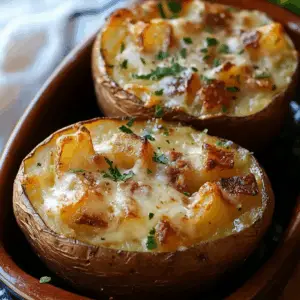
FAQs About French Onion Potatoes and Potato Bakes
Can I make French onion potatoes ahead of time?
Yes! Prepare the potatoes and onion mixture a day in advance, refrigerate them separately, and assemble and bake just before serving for best texture.
What’s the best cheese for baked potatoes?
Gruyère cheese is ideal because of its creamy melting properties and nutty flavor. Alternatives like Swiss cheese or cheddar also work well.
How do you reheat potato bakes without drying them out?
Cover the dish with foil and reheat at a low temperature (around 300°F) until warmed through. Adding a splash of broth can help maintain moisture.
Are French onion potatoes freezer-friendly?
It’s not ideal, as freezing changes the texture of baked potatoes. However, you can freeze the caramelized onion filling separately, following techniques seen in freezing caramelized onions.
Can I make this recipe vegetarian?
Absolutely! Simply replace the beef broth with vegetable broth, and ensure your cheese is vegetarian-certified if needed.
PrintEasy French Onion Potatoes and Other Savory Potato Bake Recipes
This Easy French Onion Potatoes recipe brings together the irresistible flavors of deeply caramelized onions, fluffy baked russet potatoes, and gooey Gruyère cheese in a warm, savory dish perfect for any occasion. Whether you’re preparing a comforting weeknight meal or a stunning side dish for a holiday feast, these potatoes deliver big flavor with minimal effort. Topped with fresh parsley and infused with aromatic thyme and rich broth, they offer a perfect balance of hearty and luxurious.
- Author: Clara
Ingredients
- 4 large russet potatoes
- 2 tablespoons olive oil
- 2 large yellow onions, thinly sliced
- 2 tablespoons butter
- 1 teaspoon sugar
- 1 teaspoon salt
- 1/2 teaspoon black pepper
- 1/2 teaspoon thyme
- 1/2 cup beef broth
- 1 cup shredded Gruyère cheese (or Swiss cheese)
- Fresh parsley, chopped (for garnish)
Instructions
Preheat your oven to 400°F (200°C). Scrub and dry the potatoes, then pierce them several times with a fork.
Rub the potatoes with olive oil and place them directly on the oven rack. Bake for 45-60 minutes or until tender.
While the potatoes are baking, melt the butter in a large skillet over medium heat. Add the onions and cook slowly, stirring occasionally, for about 15 minutes.
Sprinkle in the sugar, salt, pepper, and thyme. Continue cooking for another 10-15 minutes until the onions are deeply golden and caramelized.
Pour in the beef broth and stir, scraping up any browned bits from the pan. Cook until the liquid reduces and thickens slightly.
When the potatoes are done, let them cool slightly. Cut a slit down the center of each potato and gently squeeze the sides to open them up.
Fluff the inside of each potato with a fork, then fill them with the caramelized onion mixture.
Top generously with shredded Gruyère cheese.
Return the filled potatoes to the oven and bake for another 5-7 minutes, or until the cheese is melted and bubbly.
Garnish with fresh parsley before serving.
Notes
-
Potato Choice: Always opt for large, firm russet potatoes for the best baking results.
-
Caramelization Tip: Patience is key. Allow onions to slowly brown for the richest flavor.
-
Cheese Options: While Gruyère cheese is traditional, Swiss or cheddar can easily be substituted.
-
Vegetarian Adjustment: Use vegetable broth instead of beef broth without compromising on taste.
-
Make-Ahead Tip: Prepare the onions and bake the potatoes ahead of time to assemble and bake right before serving.
-
Storage Tip: Store leftovers in an airtight container and reheat with a splash of broth to maintain moisture.


